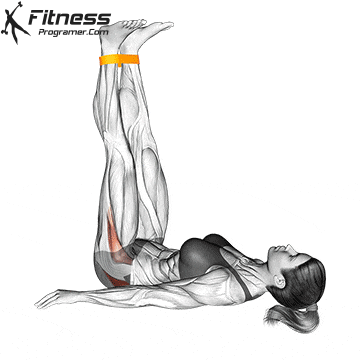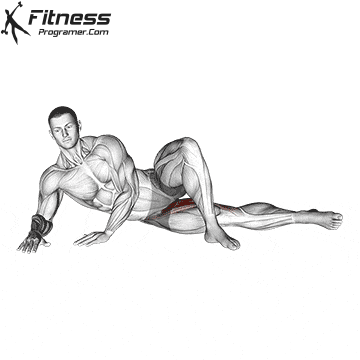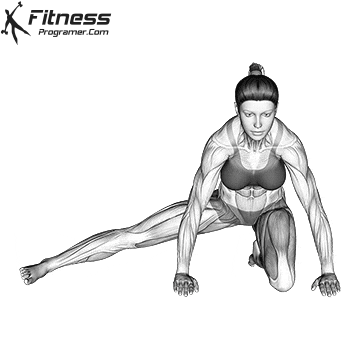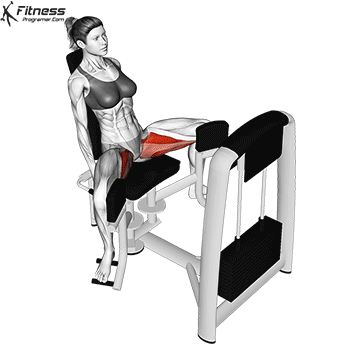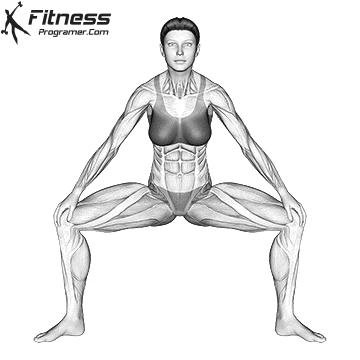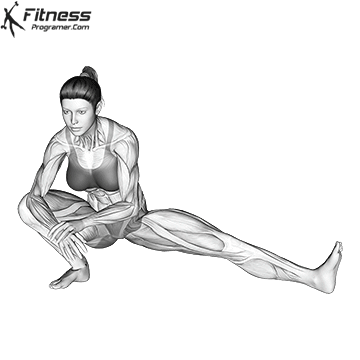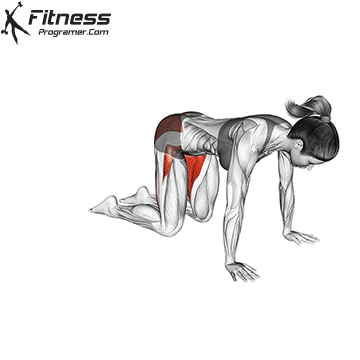How to Sphinx Pose
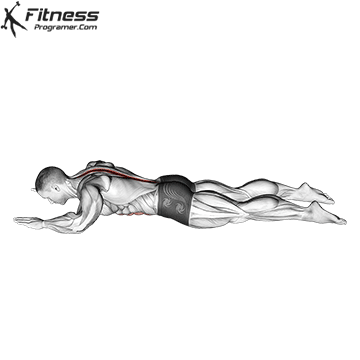
Hold for up to 10 breaths. To release, exhale as you slowly lower your torso, chest, and head to the floor.
Sphinx Pose Benefits
- The Sphinx is a wonderful yoga pose to open the upper body and gain more strength and mobility in the mid-back and the thoracic spine. This move strengthens the erector spinae muscles that provide support to the spine. Strong back muscles can prevent postural deviations that lead to poor posture and discomfort, such as kyphosis (“hunchback”). Sphinx movement improves your posture by extending your back muscles and reducing the tension between your lower back and core areas. It also enhances your lower back’s strength, making it easier to stay upright throughout the day.
Muscles Worked in the Sphinx Pose
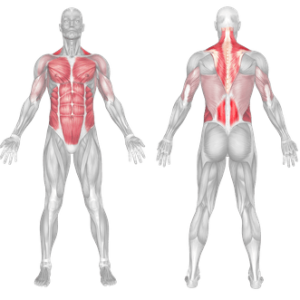
How to Standing Rotation
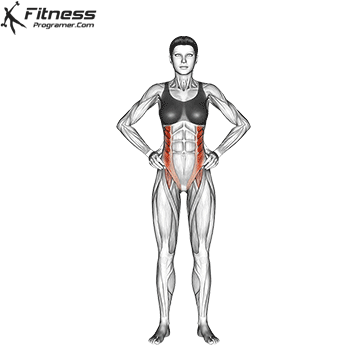
1- Stand with your feet shoulder-width apart and your elbows raised to each side.
2- Keeping your hips straight and aligned, rotate your upper body with a smooth motion to your right.
3- Pause at the edge of the movement, then rotate back through the start position, keeping your movement fluid, not jerky.
4- Continue the movement to your left side, keeping your hips and your elbows raised to each side. Pause at the edge of the movement, then rotate to the start position.
Standing Rotation Benefits
- A dynamic flexibility exercise that you can do before starting workouts. It can help you increase flexibility and range of motion, including core and abdominal muscles
Muscles Worked in The Standing Rotation
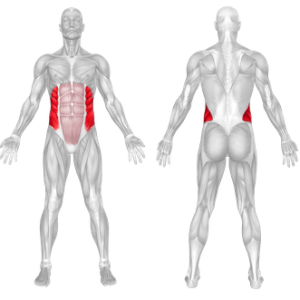
How to: Upavistha Konasana
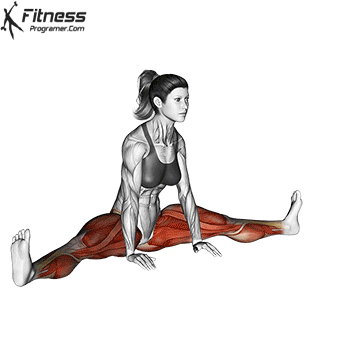
Dynamic stretching consists of active movements. It is usually done before a workout to help warm up your muscles and increase your heart rate. Move slowly, stop and repeat, dig a little deeper each time and improve your range of motion. Pre-workout dynamic stretching improves circulation, prepares your muscles for movement, and temporarily increases your range of motion.
Static stretching, more commonly done at the end of a workout when your muscles are warm, is when stretches are held in place for a certain period of time, not moving. Static stretching is the most effective form of stretching for loosening up your muscles, joints, ligaments, and tendons, while also improving flexibility and range of motion. Static stretching requires you to move a muscle to the end of its range of motion and maintain this position for 20 to 45 seconds. Repeat this 2 to 3 times each.
Upavistha Konasana Benefits
- The Upavistha Konasana is a challenging yoga pose. The asana forms an angle that gives a great stretch to the body, especially the lower body. It stretches your legs, hips, shoulders and groin muscles, strengthens your back and improves your posture. Stretching the body increases the flexibility of the muscles and reduces the risk of injury and prevents muscle soreness.
People with herniated disks should consult a doctor before performing this pose. This pose is also not suitable for Individuals with back, hips, knees and hamstring injuries. Therefore, in case of a tear in your groin and hamstring area, it is recommended that you don’t practice the Wide Angle Seated Forward Bend Pose.
Muscles Worked in the Upavistha Konasana
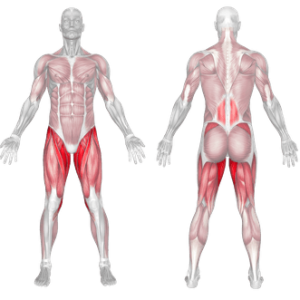
How to Seated Hamstring Stretch
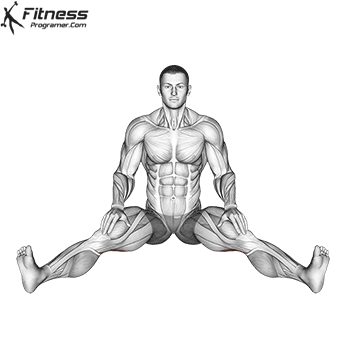
Dynamic stretching consists of active movements. It is usually done before a workout to help warm up your muscles and increase your heart rate. Move slowly, stop and repeat, dig a little deeper each time and improve your range of motion. Pre-workout dynamic stretching improves circulation, prepares your muscles for movement, and temporarily increases your range of motion.
Static stretching, more commonly done at the end of a workout when your muscles are warm, is when stretches are held in place for a certain period of time, not moving. Static stretching is the most effective form of stretching for loosening up your muscles, joints, ligaments, and tendons, while also improving flexibility and range of motion. Static stretching requires you to move a muscle to the end of its range of motion and maintain this position for 20 to 45 seconds. Repeat this 2 to 3 times each.
Seated Hamstring Stretch / Benefits
- The seated hamstring stretch forms an angle that gives a great stretch to the body, especially the lower body. It stretches your legs, hips, shoulders and groin muscles, strengthens your back and improves your posture. Stretching the body increases the flexibility of the muscles and reduces the risk of injury and prevents muscle soreness.
Muscles Worked in the Seated Hamstring Stretch

How to Kneeling Quad Stretch
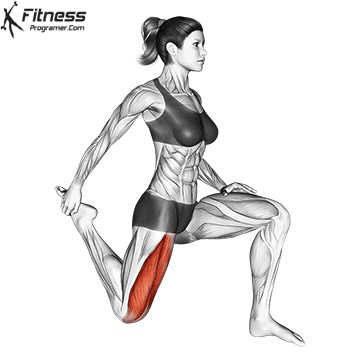
Dynamic stretching consists of active movements. It is usually done before a workout to help warm up your muscles and increase your heart rate. Move slowly, stop and repeat, dig a little deeper each time and improve your range of motion. Pre-workout dynamic stretching improves circulation, prepares your muscles for movement, and temporarily increases your range of motion.
Static stretching, more commonly done at the end of a workout when your muscles are warm, is when stretches are held in place for a certain period of time, not moving. Static stretching is the most effective form of stretching for loosening up your muscles, joints, ligaments, and tendons, while also improving flexibility and range of motion. Static stretching requires you to move a muscle to the end of its range of motion and maintain this position for 20 to 45 seconds. Repeat this 2 to 3 times each.
Kneeling Quad Stretch Benefits
- It is applied to stretch the quadriceps muscles. Stretching your muscular regularly can improve your flexibility and performance, and also prevent injury and stiffness.
Muscles Worked in the Kneeling Quad Stretch
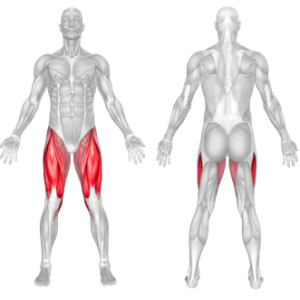
How to: Seated Groin / Adductor Stretches
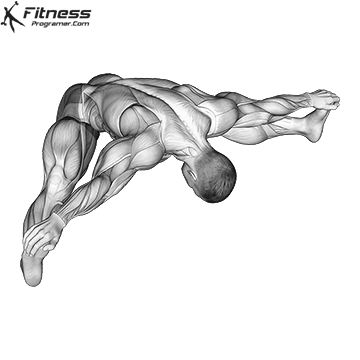
Dynamic stretching consists of active movements. It is usually done before a workout to help warm up your muscles and increase your heart rate. Move slowly, stop and repeat, dig a little deeper each time and improve your range of motion. Pre-workout dynamic stretching improves circulation, prepares your muscles for movement, and temporarily increases your range of motion.
Static stretching, more commonly done at the end of a workout when your muscles are warm, is when stretches are held in place for a certain period of time, not moving. Static stretching is the most effective form of stretching for loosening up your muscles, joints, ligaments, and tendons, while also improving flexibility and range of motion. Static stretching requires you to move a muscle to the end of its range of motion and maintain this position for 20 to 45 seconds. Repeat this 2 to 3 times each.
Seated Groin Stretch / Benefits
- The seated adductor groin stretch forms an angle that gives a great stretch to the body, especially the lower body. It stretches your legs, hips, shoulders and groin muscles, strengthens your back and improves your posture. Stretching the body increases the flexibility of the muscles and reduces the risk of injury and prevents muscle soreness.
People with herniated disks should consult a doctor before performing this pose. This pose is also not suitable for Individuals with back, hips, knees and hamstring injuries. Therefore, in case of a tear in your groin and hamstring area, it is recommended that you don’t practice the Wide Angle Seated Forward Bend Pose.
Muscles Worked in the Seated Groin Stretch

How to: Lying Hamstring Stretch
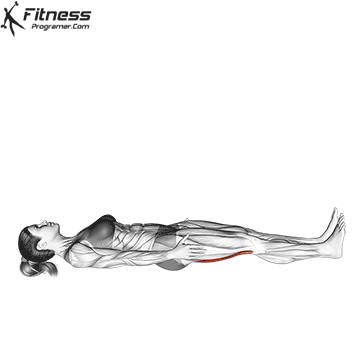
Dynamic stretching consists of active movements. It is usually done before a workout to help warm up your muscles and increase your heart rate. Move slowly, stop and repeat, dig a little deeper each time and improve your range of motion.
Static stretching is typically done at the end of your workout, once your muscles are warm and relaxed. Hold the stretch for 15 to 40 seconds. Return to the starting position and repeat on the other side.
Lying Hamstring Stretch / Benefits
- Hamstring stretches will help keep the muscles flexible and mobile. The best way to keep these muscles relaxed and flexible is by including dynamic stretches in your warm-up and static stretches in your cooldown routine. Stretching your hamstring regularly can improve your flexibility and performance, and also prevent injury and stiffness. Pre-workout dynamic stretching improves circulation, prepares your muscles for movement, and temporarily increases your range of motion.
Muscles Worked in the Hamstring Lying Stretch
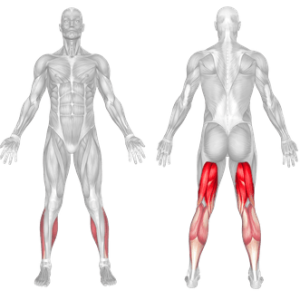
How to do Standing Toe Touch
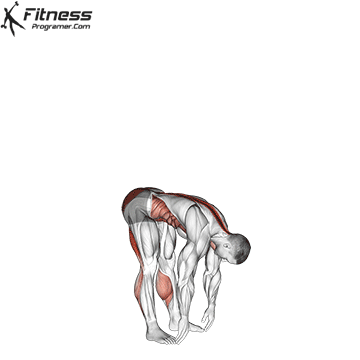
1- Stand tall with your feet shoulder-width apart and your knees slightly bent. Engaging your core, raise your arms above your head, keeping your elbows soft.
2- Begin to roll down through the spine, initiating the movement from the head and upper back. Drop the arms forward and below your shoulders in a smooth controlled motion.
3- Continue the movement until you are as fully folded through the spine and hips as possible without straining. Relax your head, neck, and shoulders. Hold briefly, then return to start position in a slow, fluid motion.
Thigh Fly Overview
The Thigh Fly, also known as the Adductor Magnus Stretch or Inner Thigh Stretch, is a versatile exercise that enhances flexibility, mobility, and strength in the inner thigh area. This exercise involves lying on your back, lifting your legs towards the ceiling, and then opening and closing them in a controlled manner to engage the inner thigh muscles.
The Thigh Fly can be performed as either a static stretch, where you hold the position for a certain period, or as a dynamic movement, where you continuously open and close your legs. Both variations offer unique benefits. By incorporating the Thigh Fly into your fitness routine, you can improve flexibility, strength, and mobility while supporting overall lower body function and stability.
How to Perform the Thigh Fly
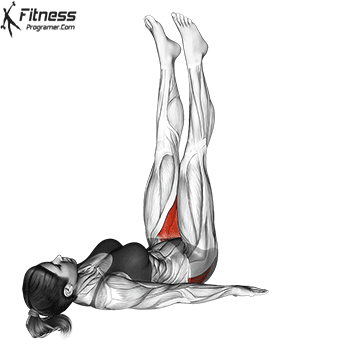
The Thigh Fly as a static stretch:
- Starting Position: Lie on your back with your legs together, lifted towards the ceiling. Ensure your hips are firmly anchored to the floor.
- Stretching Movement: Slowly open your legs to the sides as far as comfortable, feeling a stretch along your inner thighs. Hold this position for 10-15 seconds while breathing steadily.
- Return to Starting Position: Gently close your legs back together, returning to the starting position.
- Repetitions: Repeat the stretch for 2-4 repetitions, taking brief rest periods in between if needed.
The Thigh Fly as a dynamic movement:
- Starting Position: Begin in the same starting position as the static stretch.
- Continuous Movement: Open your legs to the sides and then close them back together in a fluid motion without pausing at the stretched position.
- Repetitions: Perform the dynamic Thigh Fly for the specified number of repetitions without resting between each repetition.
- Breathing: Inhale as you open your legs and exhale as you close them.
As always, listen to your body and adjust the intensity and duration of the exercise based on your fitness level and comfort.
Tips for Proper Form
- Keep your hips anchored to the floor throughout the movement.
- Move slowly and with control to maximize the stretch and engage the muscles effectively.
- Breathe deeply and steadily throughout the exercise.
- If you feel discomfort or strain, reduce the range of motion or stop the exercise.
Common Mistakes to Avoid
- Arching the Lower Back: Ensure your back stays flat on the ground to prevent strain.
- Using Momentum: Perform the movement with control rather than relying on momentum.
- Overextending: Avoid pushing your legs too far apart, as this may cause muscle strain.
- Holding Your Breath: Maintain steady breathing to enhance relaxation and effectiveness.
Benefits of the Thigh Fly
1. Enhanced Flexibility
The Thigh Fly helps stretch and lengthen the inner thigh muscles, increasing range of motion and reducing muscle tightness. Improved flexibility can also contribute to better posture and movement efficiency.
2. Improved Mobility
By increasing flexibility and strengthening the inner thighs, the Thigh Fly makes movements like walking, running, and squatting easier and more comfortable. Enhanced mobility can also help reduce the risk of injury by promoting better joint function.
3. Increased Strength
This exercise engages and strengthens the inner thigh muscles, which provide stability and support to the hips and pelvis. Stronger inner thighs contribute to better balance and coordination, which are essential for both daily activities and athletic performance.
4. Core Activation
The Thigh Fly requires core stability to maintain proper form, which helps strengthen the abdominal muscles, lower back, and pelvis. A strong core supports better posture and overall body alignment.
5. Enhanced Lower Body Function
Stronger and more flexible inner thighs improve overall lower body function, which can enhance athletic performance, increase agility, and reduce the risk of falls, particularly in older adults.
6. Rehabilitation & Injury Prevention
The controlled stretching and strengthening involved in the Thigh Fly can be beneficial for individuals recovering from hip, thigh, or groin injuries. This exercise can help promote healing, restore range of motion, and improve overall lower-body stability.
How to Incorporate the Thigh Fly Into Your Routine
- Warm-Up or Cool-Down: Use the static stretch variation before or after workouts to improve flexibility.
- Leg Day Workouts: Include the dynamic Thigh Fly to enhance inner thigh strength and stability.
- Core Workouts: Engage the core while performing the movement to improve balance and abdominal strength.
- Rehabilitation Programs: Utilize this exercise for recovering from groin, hip, or thigh injuries with a physical therapist’s guidance.
Thigh Fly Muscles Worked
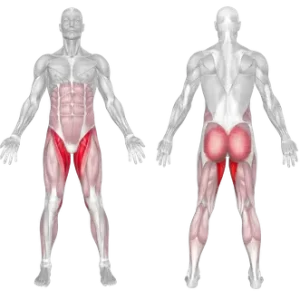
Thigh fly Variations
Overview
The Standing Cross-Leg Hamstring Stretch is a static flexibility exercise that targets the hamstrings, calves, glutes, and lower back. It is a posterior chain-focused stretch and is commonly used in warm-ups, cool-downs, and flexibility routines. This stretch helps release muscle tension, especially for those with sedentary lifestyles or lower body tightness due to training.
How to Perform the Standing Cross-Leg Hamstring Stretch
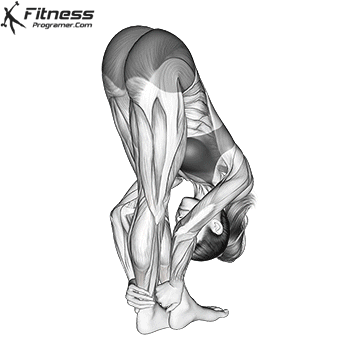
Starting Position: Stand tall with both feet together and arms at your sides.
Cross Your Legs: Step your right foot over your left so your legs are crossed. Keep both feet flat on the ground and knees slightly bent or straight depending on flexibility.
Bend Forward: Slowly hinge at the hips and bend forward, reaching toward your toes or the floor. Let your head hang down and keep your spine relaxed.
Hold the Stretch: Grab your ankles, shins, or the floor—wherever your flexibility allows. Hold this position for 20–30 seconds while breathing deeply.
Switch Sides: Slowly return to the starting position, then switch your leg cross and repeat the stretch on the other side.
Tips for Proper Form
Keep your back relaxed and allow your spine to lengthen naturally.
Don’t lock your knees; a soft bend prevents unnecessary strain.
Avoid bouncing or jerking movements; the stretch should be slow and controlled.
Exhale deeply as you fold forward to help relax your muscles.
Focus on the hip hinge, not the back bend, to target hamstrings properly.
Common Mistakes
Rounding the back too much: This reduces the effectiveness of the hamstring stretch and may strain your spine.
Bouncing to go deeper: Static stretches should be held, not bounced.
Locking the knees: This can strain the joints and reduce muscle engagement.
Overreaching: Trying to touch the floor before developing flexibility may cause injury.
Incorrect breathing: Holding your breath can increase tension and reduce the stretch’s effectiveness.
Benefits of the Standing Cross-Leg Hamstring Stretch
Improves hamstring flexibility: Helps elongate tight hamstrings, reducing the risk of strains and tears.
Reduces lower back tension: The forward fold decompresses the spine and stretches the lower back, alleviating stiffness.
Enhances posture: Regular practice can correct posterior pelvic tilt caused by tight posterior chain muscles.
Increases blood flow to muscles: Stretching stimulates circulation, helping with recovery and reducing muscle soreness.
Boosts hip and glute mobility: Crossing the legs targets additional fibers in the glutes and hips, enhancing lower body movement quality.
Improves balance and coordination: Standing while folding forward with legs crossed requires and develops body awareness.
No equipment required: A convenient stretch that can be performed anywhere—gym, home, or office.
How to Incorporate Into Your Routine
- For Flexibility Training: Include this stretch at the end of your workout when muscles are warm. Perform 2–3 rounds per leg, holding for 30–60 seconds.
- For General Fitness: Use it during cool-downs after leg-heavy workouts or as a daily stretch to counteract sitting.
- For Recovery: Add it to your post-rehabilitation or mobility routine to restore hamstring length and reduce tension.
- For Athletic Performance: Incorporate before sprinting, deadlifting, or jumping workouts to ensure optimal hamstring range of motion.
- For Yoga or Mobility Circuits: Use this movement in place of seated forward folds for a standing variation that still builds deep hamstring flexibility.
Muscles Worked
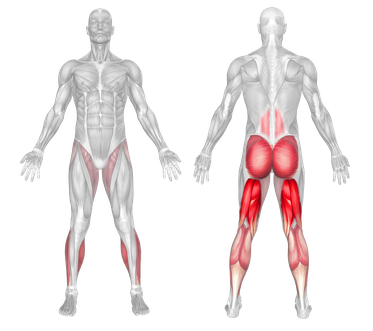
Frequently Asked Questions
Is the standing cross-leg hamstring stretch safe for beginners?
Yes, but beginners should maintain a slight bend in the knees and avoid overstretching to prevent strain.
Can this stretch help with lower back pain?
It can relieve mild lower back tightness caused by hamstring stiffness, but those with chronic back pain should consult a professional first.
How often should I perform this stretch?
2–4 times per week is sufficient for maintaining flexibility. Daily use is fine if done gently.
What should I do if I can’t reach the floor?
Place your hands on your thighs, shins, or use yoga blocks to support yourself without straining.
Can I perform this stretch cold, without warming up?
It’s best to stretch after some light activity or a workout. Stretching cold muscles can lead to injury.

